Kerala Ecotourism
Ecotourism initiatives of KERALA
Kerala Ecotourism

Ecotourism is a new concept in tourism. It is a purposeful travel to natural areas to understand the cultural and natural history of environment, taking care not to alter the integrity of the ecosystem, while producing economic opportunities that make conservation of natural resources beneficial to local people. Ecotourism is gaining popularity all over the world today, especially with the emergence of the alert, independent traveler in search of experiential holidays. Kerala, God's Own Country, is a tourism destination that focuses on sustainable and eco-friendly development of tourism. A rich biodiversity and unmatched natural attractions make the State a unique ecotourism hotspot, of which the world is noticing. To explore the ecotourism possibilities in Kerala, a host of products have been developed with the active support and involvement of the local community. Bonjour Holidays supports these products that will make every journey to Kerala truly enriching while respecting the nature, environment and the community.
Gavi Ecotourism
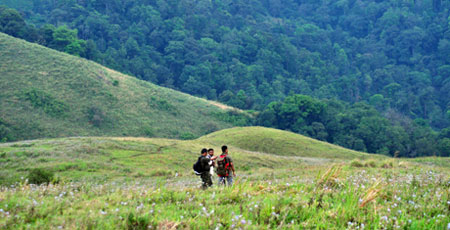
Gavi is an eco-tourist spot in Kerala which has widely become popular after 'Alistair International' the world acclaimed tourism major listed it among the leading eco-tourism centres and one of the must-see places in India. A must visit place for all nature lovers as Gavi is preserved in its natural scenic beauty untainted by the mighty hands of modernity.
Gavi is mainly known for its wildlife. Endangered species including the Nilgiri Tahr and Lion-tailed macaque are often sighted at the outskirts of Gavi. Kerala’s very own treasure elephants can be sighted abundantly. If you are the bird watcher, Gavi is the place for you. With more than 260 species of birds including the great pied hornbill, woodpecker, and kingfishers, Gavi is a heaven for birdwatchers. A splendid spot to be visited at least once for all those who love nature.Munnar Ecotourism
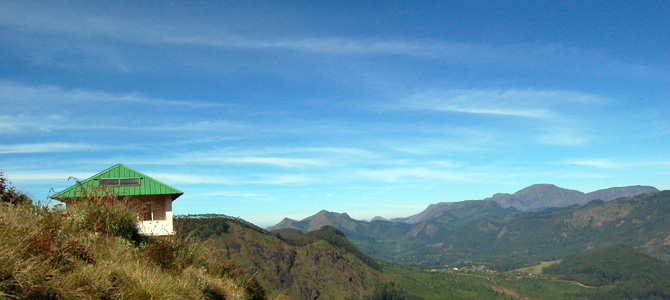
Munnar, the ornamentally designed lengthy emerald saree of lush green spread across the land that beautifies the evergreen bride of India called Kerala. Yes. The caressing chill breeze flips through the carpet of tea garden and cools your soul. The mist around you startle blissfully and makes you feel heaven like. Those plain fields and seducing greeneries will make you long to stay more. The serpentine roads that make way through silver oak trees and tea gardens bestow serenity to your eyes and lean your back with satisfied sighs.
The sight of green tea gardens caffainate the lover, the poet, the artist in you, and you will not mind to let your soul dance for a while..... Mark it!!! Munnar rocks. Kerala Forest Development Corporation’s commitment to preservation of nature and the welfare of the local communities has resulted in the evolution of the perfect eco tourism packages for the adventure minded nature enthusiasts visiting Munnar. Our programmes of trekking and outdoor camping are perfectly designed to get any visitor an unforgettable experience. The destination of the treks are ‘Meesapulimala’ the highest peak in the Western Ghats at an altitude of 2663 mt after the ‘Anamudi’ . The trails take one through a variety of habitats like meadows, shola forests and Pine plantations. These mountains are indeed a mesmeric experience. The cool mountain air, lush green surroundings, the gushing streams and the blooming Rhododendrons along the valleys all add exquisiteness to the legend of the mountains. They form the perfect habitat for variety of wildlife and bird population.Nelliyampathy Ecotourism
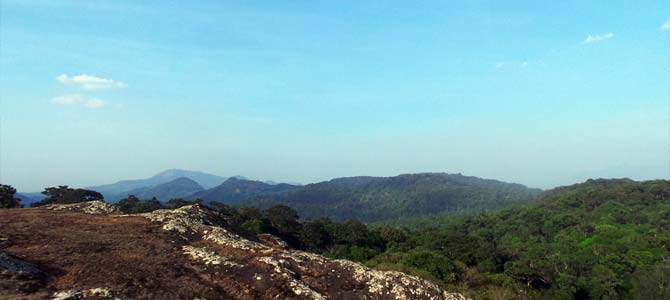
From the town of Nenmara in Palakkad district, the cloud-caressed peaks of the majestic Nelliyampathy hill ranges are a sight to behold. The height of the hills ranges from 467 m to 1572 m. To reach Nelliyampathy, one has to take the road starting from Nenmara that proceeds to the Pothundy Dam. There are about 10 hairpin bends that have to be negotiated on the way to Nelliyampathy.
The Pothundy Dam is a picturesque locale with facilities for boating and is a nice option as a picnic place. As the Ghat road winds its way up to Nelliyampathy, at certain places there are viewpoints from where the vast stretches of Palakkad district are visible with its extensive paddy fields forming a verdant carpet. It also offers a splendid view of the Palakkad Gap, which is a geographical phenomenon in the Western Ghats formation in this region, bringing into view, parts of the adjoining State of Tamilnadu. On the way up, those interested in bio farming can take a close look at the privately managed farms and also vast expanses of tea estates managed by different plantation companies. The hills of Nelliyampathy are also well known for its orange cultivation. Privately owned hotels and resorts are located at various points, as one goes up the hills of Nelliyampathy. The bio-farms located here are a major landmark as one proceeds up before reaching the topmost point at Palagapandi estate. The estate has a quaint bungalow, built during the period of the British rule in India, and has now been converted into a private owned resort. At Kaikatty, a community hall is available, which is usually used as a base by those interested in trekking. Not far away from Palagapandy is Seetharkundu where one can have a fantastic valley view, and a 100 m high waterfall providing an added attraction. From Palagapandy, one can trek or go by jeep to reach Mampara; another breathtaking vantage point at Nelliyampathy. The area in and around Palagapandy estate has tea, cardamom and coffee plantations with adjoining hills allowing one to catch a glimpse of the wildlife in the form of Indian gaur, elephants, leopards, giant squirrel etc. and is also a paradise for birdwatchers.Arippa Ecotourism
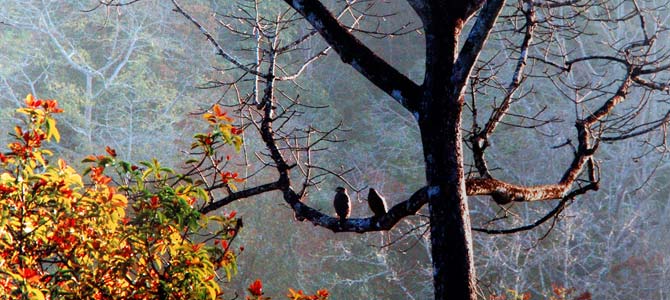
Arippa, the spectacular wooded high lands of the Western Ghats is located 52 Kms away from Trivandrum city along the Trivandrum-Shencottah State high way. The virgin land offers a perfect destination for the nature lovers amidst the forest environment. Arippa is known for its diverse species of bird and wild life and is a renowned haunt for bird watchers.
Thenmala Ecotourism
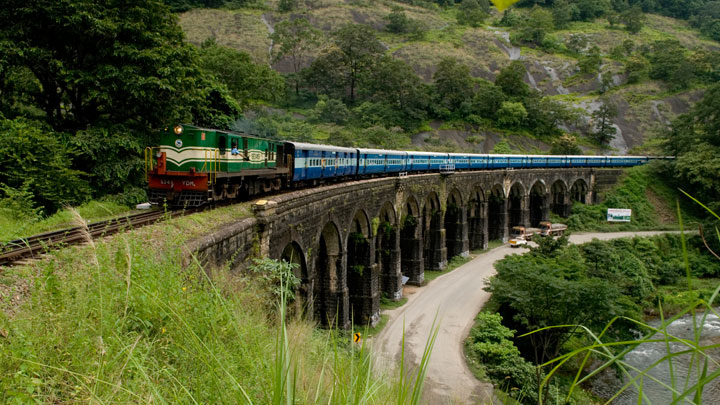
Thenmala, which lies at the conjunction of the Kollam-Shencottah road and the Trivandrum-Shencottah Road, boasts of India's first planned Eco-tourism destination. It has 10 Eco-tourism spots that cover the great hill ranges of Thiruvananthapuram, Pathanamthitta and Kollam districts. ‘Thenmala’ translates to 'Honey Hill' and so it is no surprise that high quality honey is exported from this area. The surrounding dense forest is also known for the timber that is in much demand across the country. Its terrain is dotted by forests, rubber and tree plantations and was selected by the World Tourism Organisation as one of the premier eco-friendly projects in the world.
Thenmala is located 66 kms to the east of Kollam and is a treasure trove of activities. From boat rides to leisurely walks to even adventure sports like mountain biking and rock climbing, we have you covered on all fronts. The staff is well trained in providing the required help and information at all times. Visits to the Thenmala Dam are open to tourists and the view is renowned all across the area. The sway bridge available at the Leisure Zone is a favourite among children. The winding pathways, boardwalk and sculpture garden are all worth spending an evening at. The deep woods of Thenmala contain specially made tree huts where one can escape into a separate zone in the forest. It is a surreal experience, vouched for by all our visitors. Visits to Thenmala also include opportunities to observe some very unique spots. The Nakshatravanam, a nursery of trees that are considered sacred to the 27 constellations, has people thronging to it to take home a sapling of the tree related to their own birth star. A visit to the nearby Deer Rehabilitation Centre is a must as various species of deer are bred here. They are released into the forest when the population reaches optimum levels. A boat ride in the majestic Shendurney Wildlife Sanctuary caps off a memorable trip to Thenmala. The rare flora and fauna on display are truly exquisite and will remain etched in your memory forever.Pandipathu Ecotourism
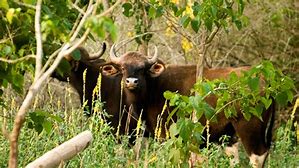
A natural haven on the Kerala-Tamil Nadu border that is gaining traction among a lot of our visitors lately is Pandipathu. Located in Thiruvananthapuram district, its secluded charm is accentuated by its wild and raw vibe, which helps people instantly, cut out the noise and chaos of urban areas. It comes under the Peppara Wildlife Sanctuary, and is accessible from Bonacaud, another picturesque plantation site.
Seeing its potential, the Forest Department of Kerala set up a 'Visit To Bison Abode' project in the area. This is because of the presence of the Indian Wild Buffalo or the 'Gaur' on the rolling grasslands and hillsides that cover its landscape. The two-day package on offer ideally caters to a group of eight, which should seek permission in advance before proceeding. Members of the forest department will accompany the visitors, guiding and assisting them during the two-day programme. Campfire and trekking programmes also form part of the two-day programme. There is a registration fee for the two-day programme, which is inclusive of food and accommodation. Permission and details of the programme can be had from the Wildlife Assistant Warden of Peppara Sanctuary and also from the office of the Wildlife Warden at Thiruvananthapuram.Mankayam Ecotourism

Mankayam boasts of two of the finest waterfalls in Southern Kerala, Kalakayam and Kurisadi. A visit to these spots enchants visitors, thanks to the sheer volume of water along with view these sites offer. It is a wonderful place to simply relax in the water and enjoy the pleasures of the rainforest. Fed by the Mankayam River, these waterfalls are regularly rated high in lists of weekend getaways for residents of Thiruvananthapuram.
Mankayam acts as the focal point for a huge array of picnic spots in the area. The cool waters guide you to small forest pickets that are frequented by families seeking a place to unwind and relax. One gets to choose among a diverse range of trekking trails here with the one leading to Ayampara Waterfalls being a favourite among the locals. Here one has some really interesting camping options as well. One gets to wake up and sleep with the timeless clock of the forest dictating your decisions. Simply immerse yourself in the hands of Nature itself, and let it guide you on a wonderful new journey.Kadambrayar Ecotourism
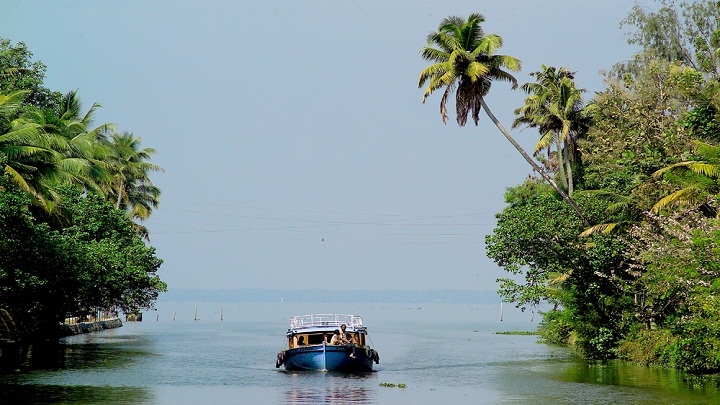
Kadambrayar Boating Centre is a charming picnic spot in a typical Kerala village, which is now an ecotourism village. Situated in Kizhakkambalam Grama Panchayat in Ernakulam district, there are myriad boating options available here, as well as a number of activities that will enchant all its visitors. Close to Wonderla amusement park, Kadambrayaris a whimsical blend of emerald waters, verdant fields and swaying coconut trees. Travellers looking for a tranquil experience will surely find here, as the serene atmosphere and the soothing water lulls your senses.
Mangrove Trail by Malabar Ecotourism

A destination that would easily catch the attention of those who care about nature in one way or the other! It is a place where one of nature's magical propositions - mangroves - take centre stage.
Started a couple of years ago, the mangrove trail that has come up at Kizhake Kandankali, about five kilometers from Payannur town, offers visitors a close view of the mangrove ecosystem. Taken care of by the Malabar Mangrove Ecotourism Circuit, the trail has been developed based on the principles of sustainable tourism, with the assistance of the local people. Managed by Malabar Ecotourism, bird-watching, canoeing and fishing are the main attractions of the tour through the mangrove forest. It is a sprawling property and the tour here is operated on a stretch of otherwise impenetrable mangrove forests. The landscape is marked by many tidal creeks and waterways. With two high tides and two low tides a day, the terrain is tough to negotiate. The mangrove trail is through a tree-lined tunnel for 100 m. It takes about two hours to cover the entire trail. A walk under the canopy offers the visitor a glimpse of exotic birds, squirrels, jackals etc. The mangroves here are nesting places of a large number of local and migratory birds. The avian community here is quite appealing. Birds like the Brown-winged kingfisher, Grey-headed lapwing, Pallas Fish Eagle, Lesser adjutant and Mangrove whistler can be spotted here. Other birds that form part of the usual sightings include the myna, quail, kingfisher, wild fowls, different species of herons and weaver birds. And if you happen to be at the mangrove trail during the rainy season, you might also come across migratory birds. If lucky, one can also spot sea turtles and otters. Otters' creek, Mangrove tunnel, Turtle lagoon, mangrove creek, River Perumba, River Pullencode and Fishing bay are the stopovers during the tour. The local people would double up as guides and oarsmen. This is one of the rare destinations in Kerala which presents visitors with settings for bird watching, angling, trekking and boating. Accommodation is arranged on request.The trail is from 9 a.m. to 6 p.m. on week days. Various tour packages are offered. Nearby travel attractions include Aralam Farm, Bekal Fort, Parassinikadavu Temple, Payyambalam Beach and Arakkal Palace.Konni Ecotourism

The facilities developed at Konni include elephant viewing, elephant feeding, elephant ride, watching elephant bath etc. An elephant museum, which is planned to be developed as a complete natural history museum based on elephant, also is set up.
The project site is designed to be a zero waste center. The elephant dung is converted into biogas and the fiber in the dung is converted into hand made paper, which is an eco friendly product. The plastic waste is planned to be converted into recycled product. Outlets for sale of non-wood forest products and other eco friendly materials are also provided in the center. Half-day trek takes visitors to locations like Kurichi, Chavarpandy etc., which are locations in evergreen forests. Peruvally in Kallar River is another enchanting location for relaxation after half day trekking. Kattathi, Kottampara and Aluvamkudy are locations, which can be accessed in one day trekking through sylvan forests. Manalar-Kumbhavurutty in Achencoil is a rejuvenating waterfall deep inside forests which is destination of two days trekking. Row with the ripples of nature’s gentlest waters and float towards vistas remote and exotic. Bringing you closer to the forest environs as well as the wildlife, the adventurous coracle rafting in Adavi, the first of its kind in Kerala, is all set for its maiden voyage. A picturesque forest patch, 10 km from Konni on the banks of river Kallar, Adavi has nearly 5-km river frontage. The Adavi Eco-tourism project jointly launched by the departments of Forest and Tourism is part of the third phase of Konni Eco tourism project and is just five km from Mundommoozhy on the proposed Achencoil-Chittar hill highway. Enjoy a bowl boat riding or coracle rafting at Adavi Eco-tourism near Konni in Pathanamthitta. The Adavi Eco-tourism project is jointly launched by the departments of Forest and Tourism is part of the third phase of Konni Eco tourism project. A picturesque forest patch, 10 km from Konni on the banks of river Kallar, Adavi has nearly 5-km river frontage. Coracle rafting or Bowl Boat riding is an innovative venture, which promises a never-before experience to travellers. Coracle rafting or Bowl Boat riding is an innovative venture, which promises a never-before experience to travellers. Coracle is a round bamboo raft on which a group of four can row. At Adavi, one can row the coracle on paying Rs. 200 for an hour. The rafting begins from Mundommoozhy and goes through Thottikayam, Idikallu, Thattathikayam and finally would reach Irattayaar. Tickets for rafting can be obtained from the Konni Eco-tourism Centre. A slender bamboo variety locally known as kallanmula obtained from the Mannarappara forest region is used for the making of the coracles used at Adavi. A butterfly park, a rehabilitation centre for elephants, whitewater rafting, adventure trekking, tree-top huts, bamboo cottages, canopy walkways and eco-friendly tourist cottages are the other attractions that would soon come up at Adavi. Konni with a vast expanse of lush green forests is the eco-tourism hub of Pathanamthitta district, which has a project with elephants at its nerve centre. An elephant kraal (shelter), a photo gallery, modern elephant shelters, an elephant museum, shops to sell forest produce, a children’s park, a biogas plant and a paper-making unit are part of the project, offering vivid experiences to the visitors. Hop on a coracle and glide by nature’s myriad canvases.Palaruvi
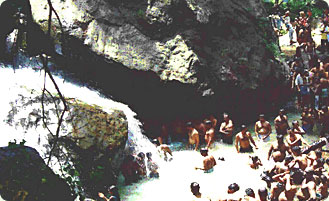
One of the most resplendent waterfalls located in an eco tourism location in Kollam District, the Palaruvi waterfall is managed by the Palaruvi Vana Samrakhana Samithi (VSS) under the Thenmala Forest Development Agency. The falls, which is a memorable experience, is visited by one lakh people every year. The VSS provides typical Kerala food using spices of Arienkavu valley. Facilities for trekking to evergreen forests and to sandal trees bearing forests are also available.
Manalar-Kumbhavurutty
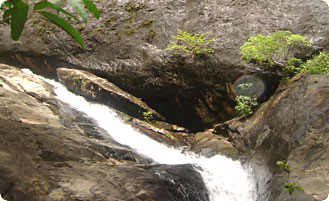
Managed by Manalar-Kumbhavurutty Vana Samrakshana Samithy. Apart from waterfalls, visitors can go trekking to the sprawling grasslands at high elevation, for an unique experience through evergreen thickets, abundant in wild flora and fauna.
Kallar
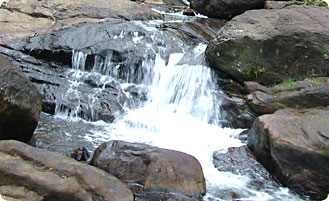
Kallar, located in the foothills of the Western Ghats, in the famous Agastyamala region is famous for the Meenmutty waterfalls. A trek of 1.5 km would take visitors to the waterfalls through thick forests. The location is managed by Kallar Vana Samrakshana Samithi (VSS) under Thiruvananthapuram Forest Development Agency.
Idinjar
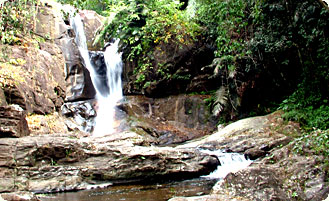
Located in the foothills of Ponmudi is the enchanting Idinjar waterfall. The location is managed by Mankayam Vana Samrakshana Samithi (VSS). One hour trekking from the falls through a bridle path developed by the British planters in the 19th century takes visitors to the Ponmudi hills. Watching the falls and taking a dip in the river is an unforgettable experience.
Ponmudi
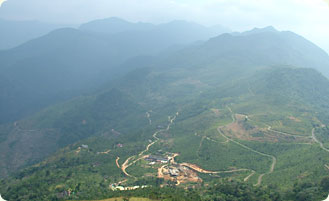
About 59 kms from the State Capital Thiruvananthapuram is Ponmudi, a hill station with a unique mix of sprawling grasslands and evergreen forest patches, popularly known as Sholas. Situated at an altitude of 1100 m above mean sea level, the hills of Ponmudi offer picture postcard vistas. The visitors are tempted to stay back and enjoy the communion with nature. Varayattumotta the highest peak in the ranges is an abode of Nilgiri Tahr, an endangered mountain goat in this region.
Never ending forested hill ranges and the tea plantations in the lower Ponmudi hills is a unique sight from Ponmudi. Trekking facilities to Varayattumotta, Chinnappulle and Braemoor supported by guides engaged by Ponmudi Vana Samrakshana Samithi provides memorable experience to adventurers.Meesappulimala
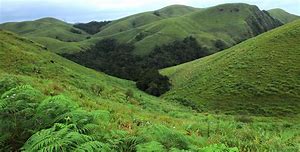
Near to the famous hill station Munnar in Kerala is a lesser known destination called Meesappulimala - a destination for the highly adventurous. The second highest peak in the Western Ghats, here you can have a memorable trekking experience with clouds in company. This mesmerizing paradise of nature is slowly getting popular among ardent trekkers.
Travel a distance of 24 km from Munnar via Mattupetty through Aruvikkad estate and you will reach the base camp of Meesappulimala. The journey to the base camp is difficult, yet exciting. En route you can see the Pandava cave. The villagers believe that the Pandavas, the heroes of the Indian epic Mahabharata, stayed in this cave during their twelve years of exile in the forest. This beautiful cave also shelters countless small and chirpy birds. The Kerala Forest Development Corporation (KFDC) will arrange all the facilities for trekking and camping. You will be accompanied by an expert guide provided by the KFDC. 4 km from the base camp is the Rhodo Valley, the last point accessible by any four wheelers. Tents are available at Rhodo Valley for those who want to enjoy a stay at this beautiful place. The walk way to the Rhodo Valley is bedecked with pine trees. The check dam here provides crystal clear ice-cold water for the weary travellers. Nature is clad in her best attire here, which will ease the weariness of the physically demanding climb. The crisscrossing streams make the trip all the more interesting. Keep your eyes and ears open, if you are lucky you will even get a chance to come across elephants, gaur and Nilgiri tahrs, that too, in their natural habitat. If you start early in the morning, you will reach the top of the peak by noon, where you will be at an altitude of 8,661 feet from the sea level. From the top you will get a panoramic view of Anamudi, the highest peak in the Western Ghats the Mattupetty and Anayirangal reservoirs, and parts of Tamil Nadu. You can also relish the spectacular view of the surrounding waterfalls including the gorgeous Kurinji waterfall. At this height you can even have a tête-à-tête with the drifting clouds. Surely, Meesappulimala would be an experience that will linger on your mind forever.Chellarkovil
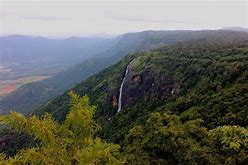
The sleepy village of Chellarkovil, about 15 km from Kumily, lies on the Kerala-Tamil Nadu border. The village is known for its cascading waterfalls the peculiarity of which is that they emerge from Kerala and fall into the Tamil Nadu region.
The eastern side of the village, which slopes down to the coconut groves of Kambam village in Tamil Nadu, offers a breathtaking view of the plains and valleys below. The view encompasses the plains of Theni as well as Mangaladevi, the highest point in the Periyar Tiger Reserve. Treetop huts have been built in the village as part of the eco-tourism programme. Chellarkovil also has a medicinal garden and there are huts in the garden which provide a resting place for visitors. Home-stay facilities are available for an intimate experience of village life in the high ranges. The place is worth a visit any time of the year except during June and July.Kakkayam

A dam site about 45 km away from Kozhikode, this scenic locale is ideal for both trekking and rock climbing. The public transport to Kakkayam ends at the local marketplace. From there, to travel further into the forests one needs to hire rickshaws or jeeps. Being an ecotourism destination, access to the area is permitted only on the purchase of tickets available at the entry point.
The journey through thick forests punctuated by quaint waterfalls can be described as nothing short of surreal. Most of these waterfalls can be accessed only via the wild jungle streams that tumble through rocks along the forest trails. A boat ride in the Kakkayam Dam Reservoir will unveil to you the Ambalappara waterfalls. The boating services are all a part of the Hydel Tourism Project under the Kerala Hydel Tourism Centre (KHTC), a subsidiary of the Kerala State Electricity Board (KSEB). The untamed wild falls, animal sightings, luxuriant greenery and the mysteries that shroud the deep dark jungles are all facets of this special package whose highlight is the boat ride. At Kakkayam KHTC currently runs 22 trips a day using two speed boats. Each boat has a capacity of six members including the driver. A bicycle ride from the Kakkayam dam site that lasts upto 30 minutes is yet another added attraction at Kakkayam. Teeming with exotic wildlife, the perfect time to visit Kakkayam is between November and April.Pathiramanal
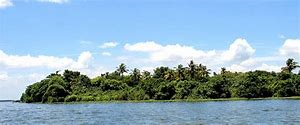
The Government has recently introduced a project named the Pathiramanal Biodiversity Conservation and Responsible Eco-tourism Development Project in the island. The project aims to make the island a sought-after destination. The focus areas of the project include a management plan for the lake, conservation of mangroves and other plant species, cleaning the island and enhancing its biodiversity.
Rare plants like the Aponogeton appendiculatus grow in this island. This plant is listed as a threatened species in the Red Data Book of Indian Plants published by The Botanical Survey of India. Other rare plants like the Macuna gigantean, Flagellaria indica, and mangrove species like Bruguiera gymnorhiza, Soniratia apetala and Exoecaria agallocha are also found, though in less numbers. Mussel colonies of the Villorita species grow in the waters close to the island. There are also some medicinal plants like the Calophyllum inophyllum, Tylophora indica and Senna alata. The island is home to about 90 species of birds and 30 species of butterflies. There are about 160 species of plants, 55 species of fish and 20 species of spiders on the island. As human disturbances are minimal in the island, it has become a roosting place for water birds, mainly of the cormorant family. Other birds seen include the darter, Indian Shag, Purple Heron, Indian Pound Heron, Large Cormorant, Night Heron, Black Bittern, Chestnut Bittern and Yellow Bittern, Little Egret, Median Egret, Large Egret, Cattle Egret and Grey Heron. Common teals, Pheasant-tailed and Bronze-winged Jacanas, Stork-billed Kingfisher, Watercock, Whistling Duck, Cotton Pygmy Goose, Whiskered Tern and Smooth Indian Otters (Lutra lutra) also inhabit the island. The backwaters between the island and the Kumarakom Bird Sanctuary are a favourite haunt of migratory birds from Siberia and EuropeNeyyar
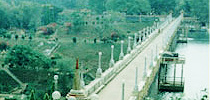
Neyyar is one of Kerala’s popular ecotourism site owing to its picturesque location. The Neyyar Wildlife Sanctuary is one of the oldest national parks of the state. The sanctuary of wilderness has unique species of flora and fauna. It is the habitat of over a hundred of fauna including species of fauna including Asian Elephant, Tiger, Leopard, and other unique variants. The Neyyar Dam is a part of the wildlife sanctuary. It is a popular picnic spot. The lake formed by the dam across the Neyyar River is shaded in the bluest of blue.
The picturesque beauty makes boating irresistible for tourists. There is also a crocodile breeding centre and a lion safari park. A repository of some of the rarest medicinal herbs is here. Ayurvedic variants are also found which are used in the procedures of the holistic science of health and wellness. The Agasthya peak at 1890 m above sea level lies within the premises of the sanctuary. It is home to a wide variety of plant species including rare medicinal plants and brilliantly colored orchids. Agasthyamalai Biosphere is now listed under the UNESCO World Heritage Sites. Trekking is allowed with express permission from the Forest Department in the summer months. Make your eco-tourism experience a memorable one with stay in the natural lodging available in the sanctuary. Wake up to the calls of birds with wildlife sound for company. Spend few days surviving on natural blessings. Thiruvananthapuram is the closest city making tours to the paradise easily possible.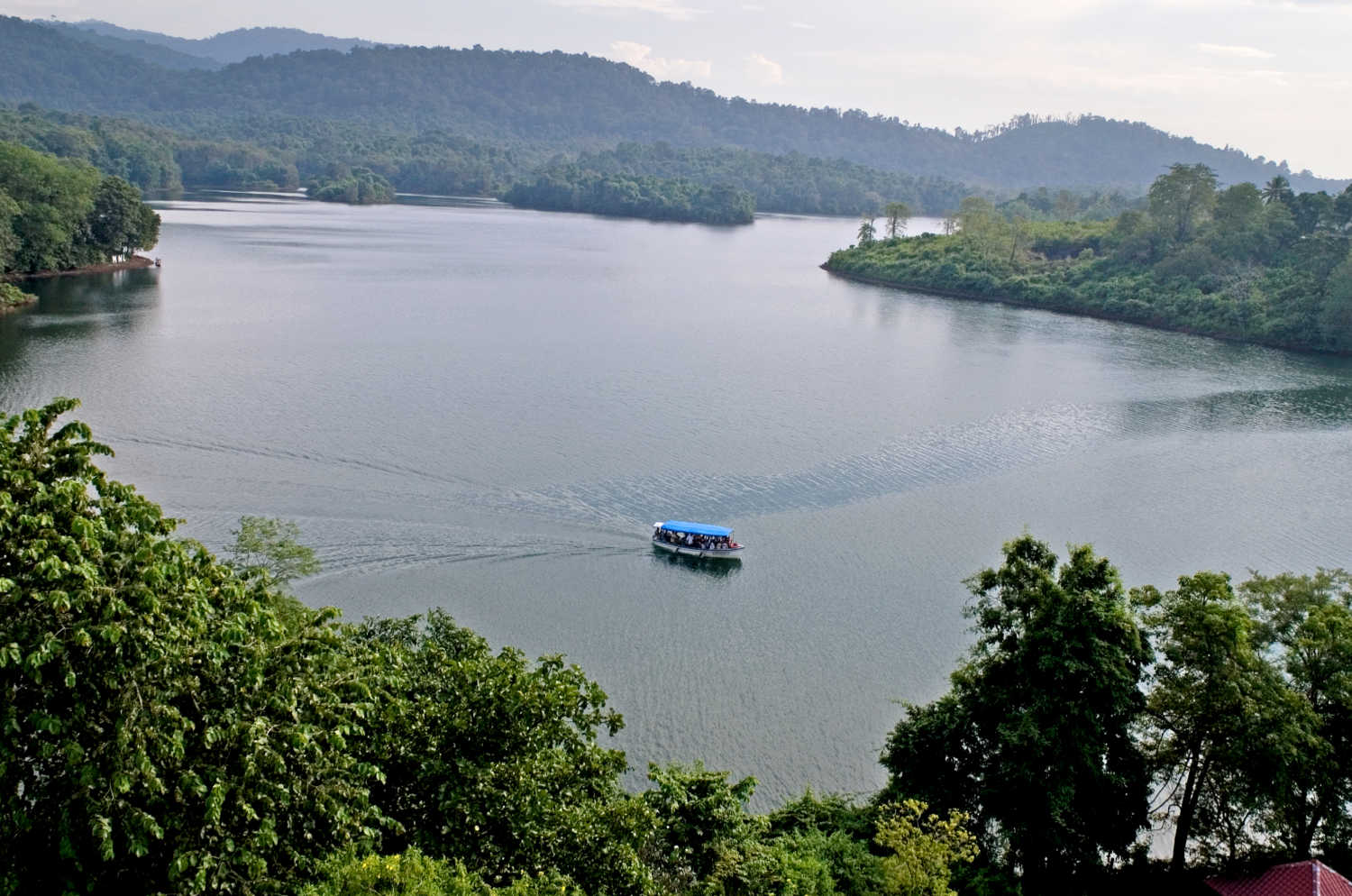
Honeymoon Tour Packages
Extreme Privacy Love @ Kerala Amazing Kerala Honeymoon Kerala Romance @ Hills
Vacation Tour Packages
Water Carnival Sunrise & Sunset Enchanting Kerala Leisure Kerala Hills to Beach Quick Kerala
Family Tour Packages
Hills & Lagoons Hills & Beaches Vibrant Kerala Exclusive Kerala Full Round
Beach Tour Packages
Beach Fantasy Pristine Beaches Beach & Backwater Weekend Beach Sun N Sand
Hillstation Tour Packages
Enchanting Hills Mist Valley Hills & Wildlife Essential Kerala Weekend @ Hills Morning Drizzle
Wildlife Tour Packages
Go Wild Birds Paradise Wild Weekend Extreme Wilderness Love Tiger
Houseboat Tour Packages
Kumarakom Round Alappuzha Round Alappuzha to Kumarakom Kumarakom to Cochin Kumarakom to Alappuzha
Backwater Tour Packages
Serene Lake Lake & Lake Hide Away Wanderlust Extreme Pleasure
Heritage Tour Packages
Village Tour Packages
Ecotourism Concept
Ecotourism is a new concept in tourism. It is a purposeful travel to natural areas to understand the cultural and natural history of environment, taking care not to alter the integrity of the ecosystem, while producing economic opportunities that make conservation of natural resources beneficial to local people.
In short, ecotourism can be conceptualised as Any tourism programme that is (a) nature based, (b) ecologically sustainable, (c) where education and interpretation is a major component and (d) where local people are benefited can be called ecotourism. If it does not satisfy any one of these components then it cannot be called a real ecotourism venture.Ecotourism Tips
Dos & Don'ts for Visitors